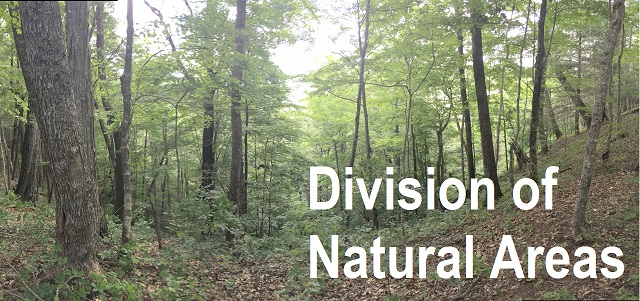Title
Vegetation patterns in the mixed mesophytic forest of eastern Kentucky
Document Type
Article
Publication Date
12-1982
Abstract
Two forest stands representing typical old—growth mixed mesophytic forest and 35—yr—old second—growth in Letcher County, southeastern Kentucky, were studied to compare structure and composition, and to determine patterns of species distribution in relation to topographic and edaphic variables. The stands were located in adjacent watersheds which were similar in all respects except logging history. The two stands were closely similar in a number of features. Basal area of all stems was not significantly different between watersheds and averaged 29 m2/ha. Floristic composition was nearly identical although relative importance of the component species varied between the old—growth and second—growth stands. Indirect ordination revealed three distinct groupings of samples in both watersheds: lower slope samples dominated by Fagus grandifolia (beech), midslope samples dominated by Acer saccharum (sugar maple) and Tilia heterophylla (basswood), and upper slope samples dominated Quercus prinus (chestnut oak) and Acer rubrum (red maple). These groupings were related to apparent gradients of moisture and soil fertility (including pH, cation exchange capacity, % base saturation, and extractable concentrations of individual ions). Beech samples were characterized by high moisture and intermediate soil fertility. Chestnut Oak—Red Maple samples were characterized by low moisture and low soil fertility. Size—class analysis indicated similar structure of the two stands. The second—growth stand contained more trees of smaller diameter; however, both stands were well described by the negative exponential distribution and the negative power curve. The second—growth stand did not exhibit the normal distribution typically found in even—aged forests that have developed following disturbance. Size—class distributions of individual species exhibited variable patterns that seemed to be related to broad ecological characteristics of the species (i.e., understory vs. overstory potential, successional vs. old—growth). Alpha diversity was greater and beta diversity lower in the second—growth watershed. The increased alpha diversity was due primarily to the occurrence of a greater number of species in the smaller size—classes (dbh), while the decreased beta diversity reflected a broader distribution of individual species. Species distributions were related to both moisture and soil fertility. However, in most cases no single factor accounted for a large proportion of the variation in a species' distribution.
Recommended Citation
Muller, R. N. (1982), Vegetation Patterns in the Mixed Mesophytic Forest of Eastern Kentucky. Ecology, 63:1901–1917. doi:10.2307/1940129


